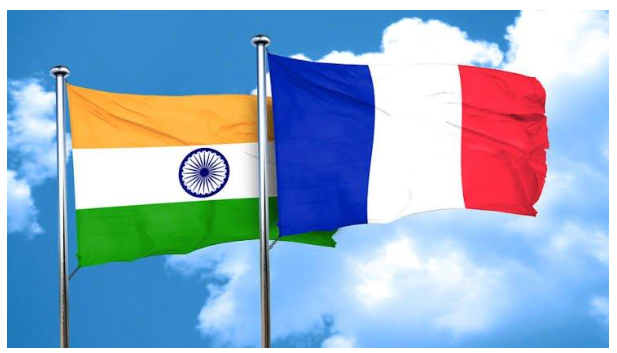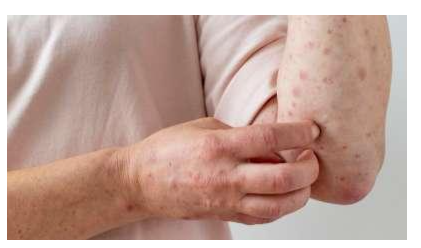Thursday, 1st February 2024
Corruption Index: India Ranks 93 among 180 Nations
In News: In the Corruption Perceptions Index for 2023, India secured the 93rd position out of 180 countries, as per a report from Transparency International.
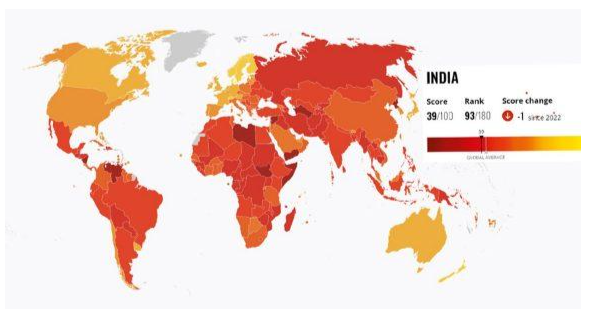
Role of the Central Bureau of Investigation (CBI)
- Primary Functions
- The Central Bureau of Investigation (CBI) plays a crucial role in tackling serious and intricate crimes, encompassing corruption, economic offenses, major frauds, and high-profile cases.
- Investigation of Complex Crimes
- The primary responsibility of the CBI is to conduct thorough investigations into complex crimes that often involve corruption and financial malfeasance. This includes cases with significant legal and financial implications.
- Collaboration on Transnational Crimes
- The CBI actively collaborates with law enforcement agencies from other countries to investigate crimes with transnational dimensions. This collaboration is essential for addressing and combating criminal activities that extend beyond national borders.
Corruption Perception Index (CPI) Overview
- Defining Corruption*
- The Corruption Perceptions Index (CPI) serves as a global ranking system, assessing countries based on their perceived levels of public sector corruption. Corruption is defined as the "abuse of entrusted power for private gain."
- Calculation of Country Scores
- The CPI aggregates scores from at least three data sources derived from 13 corruption surveys and assessments.
- Reputable institutions such as the World Bank and the World Economic Forum contribute to the collection of data.
- The perception of corruption is measured on a scale of 0-100, with 0 indicating high corruption and 100 signifying a very clean public sector.
- Significance of CPI Rankings
- The CPI is a widely recognized measurement for global public sector corruption.
- By combining various manifestations of corruption into a single, globally comparable indicator, the CPI offers a comprehensive perspective on a country's situation.
- Regular reviews of the calculation process ensure the index's robustness and coherence.
Corruption Perception Index 2023 Findings
- Global Corruption Landscape
- The 2023 CPI reveals a prevalence of corruption worldwide, with over two-thirds of countries scoring below 50 out of 100.
- The global average stagnates at 43, with the majority of countries showing no improvement or experiencing a decline over the last decade.
- 23 countries hit their lowest scores to date in 2023.
- Top 3 Ranked Countries
- Denmark (90), Finland (87), and New Zealand (85) secure the top three positions in the 2023 rankings.
- Regional Trends
- Western Europe and the European Union, while remaining the top-scoring region, witness a drop in their average score to 65.
- Sub-Saharan Africa maintains the lowest average at 33, facing challenges to democracy and the rule of law.
- Other regions globally continue to struggle, with averages below 50.
- India's Performance
- In 2023, India's overall score is 39, placing it at the 93rd position out of 180 countries, reflecting a decline from its 2022 rank of 85.
- The report notes fluctuations in India's score, making it challenging to draw firm conclusions on significant changes.
- Performance of Other South Asian Countries
- In South Asia, Pakistan (133) and Sri Lanka (115) grapple with their respective debt burdens and political instability.
- China's Anti-Corruption Measures
- China (76) gains attention for its aggressive anti-corruption crackdown, resulting in the punishment of more than 3.7 million public officials over the last decade.
Source: IE
India-France Relations
In News: On Republic Day, the French President visited India, discussing bilateral cooperation and expressing satisfaction with the increasing complexity and interoperability in joint defence exercises.
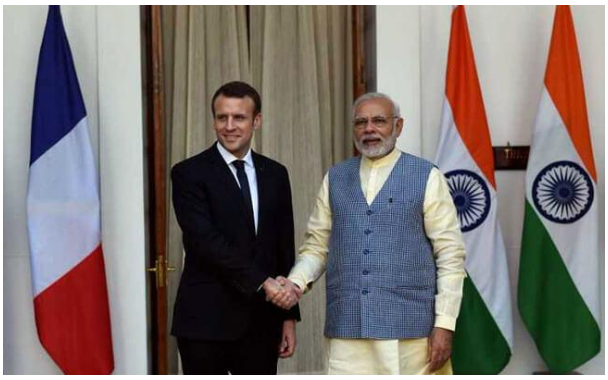
Key Highlights of India-France Bilateral Meeting
- Intensification of Cooperation in Southwest Indian Ocean
- Both nations committed to enhancing cooperation in the Southwest Indian Ocean, focusing on joint surveillance missions.
- Joint efforts contribute to securing strategic sea lanes of communication in the region.
- Indo-Pacific Partnership
- Acknowledgment of the Indo-Pacific's significance for both countries' sovereign and strategic interests.
- Commitment to deepening the partnership in the Indo-Pacific, emphasizing expanding engagement in the region.
- Defence and Security Partnership
- Highlighting the Indo-Pacific defence and security partnership as a cornerstone of collaboration.
- Emphasis on bilateral, multinational, regional, and institutional initiatives, especially in the Indian Ocean Region.
- Trilateral Cooperation
- Pledge to revitalize trilateral cooperation with Australia and deepen ties with the United Arab Emirates (UAE).
- Exploration of new trilateral partnerships in the region, exemplified by the India, France, and UAE Maritime Partnership Exercise.
- Economic Development and Connectivity
- Recognition of the importance of joint initiatives for sustainable economic development, environmental sustainability, and resilient infrastructure.
- Call for the early launch of the Indo-Pacific Triangular Development Cooperation Fund for scaling up green technologies.
- India-Middle East-Europe Corridor (IMEC)
- Acknowledgment of the strategic importance of the India-Middle East-Europe Corridor for enhancing commerce and energy flow.
- Reflecting on the potential and resilience of the corridor for India, the Middle East, and Europe.
- Multilateralism and UN Reform
- Joint call for reformed and effective multilateralism, stressing the urgent need for United Nations Security Council (UNSC) reform.
- France's reiterated support for India's permanent membership in the UNSC.
- Defence Industrial Cooperation
- Commitment to deepening integration in defence industrial sectors, exploring co-design, co-development, and co-production opportunities.
- Focus on supplying not only for India but also for other friendly nations.
- Tata Group and Airbus Agreement
- Tata Group and Airbus collaboration for the development and manufacturing of civilian helicopters.
- Expansion of the industrial partnership to produce H125 helicopters with significant indigenous components.
- Shakti Jet Engine Deal
- Ongoing discussions between India and Safran regarding the Shakti jet engine deal.
- Focus on aligning specifications with India's future fighter jet requirements.
- CFM International and Akasa Air
- Agreement between CFM International and India’s Akasa Air for more than 300 LEAP-1B engines.
- Engines to power 150 Boeing 737 MAX aircraft.
- Space Cooperation
- Launch of the Strategic Space Dialogue and signing of agreements on Defence Space Cooperation.
- Memorandum of Understanding between ISRO’s NSIL and Arianespace for satellite launch missions.
Major Areas of Cooperation between India and France
- Pillars of Relationship
- Long-standing cultural, trade, and economic linkages forming the foundation of the strategic partnership.
- Three pillars: non-interference, strategic autonomy, and refraining from involving in respective coalitions.
- Defence Partnerships
- Strong Indo-French defence partnership with significant technology transfers.
- Joint exercises: Exercise Shakti, Exercise Varuna, and Exercise Garuda.
- Similarity in Stand on NATO+
- Joint rejection of NATO+ partnership plans, aligning on the stance that NATO is not a template for India.
- Economic Cooperation
- Bilateral trade reaching USD 13.4 billion in 2022-23, with France as the 11th largest foreign investor in India.
- Collaboration on supporting sustainable economic development and resilient infrastructure.
- Cooperation at International Forum
- France's support for India's permanent membership in the UNSC.
- Joint efforts in multilateral forums, emphasizing climate change mitigation through the International Solar Alliance.
- Climate Cooperation
- Shared concern about climate change, with joint efforts including the launch of the International Solar Alliance in 2015.
Challenges Between India-France Relations
- FTA and BTIA Stagnation
- Lack of progress in the Free Trade Agreement (FTA) and the India-EU Broad-Based Trade and Investment Agreement (BTIA).
- Differing Défense and Security Priorities
- Differences in priorities and approaches influencing defence and security cooperation.
- India's regional focus versus France's global interests.
- Intellectual Property Rights Concerns
- French concerns about India's protection of intellectual property rights affecting bilateral trade.
- Trade Imbalance and Dominance of Défense Products
- Trade imbalance and the dominance of defence products in bilateral trade.
- Challenges in achieving a more balanced economic exchange.
- Barriers to Indian Products in France
- Challenges faced by Indian products in entering the French market, especially related to Sanitary and Phytosanitary measures.
- Student Mobility
- Issues related to student mobility, including visa processes and cultural integration.
- Human Trafficking Concerns
- Concerns about human trafficking, necessitating enhanced cooperation in addressing transnational crimes.
Way Forward
- Strengthen Indo-French cooperation in shaping the international order and balancing dependencies on other nations.
- Leverage the Indo-Pacific concept for strategic interests and bilateral collaboration.
- Enhance discussions on emerging areas such as connectivity, climate change, cyber-security, and science and technology.
|
UPSC Previous Year Questions Prelims (2016) Q. Consider the following statements:
Which of the statements given above is/are correct? (a) 1 only Ans: (a) Mains (2022) Q. How will the I2U2 (India, Israel, UAE and USA) grouping transform India's position in global politics? (2022) |
Source: TH
Indian Stamp Bill 2023
In News: The Indian government is considering the repeal of the Indian Stamp Act, 1899, and introducing a new law for stamp duty.
Stamp Duty Overview
- Definition
- A stamp duty is a government-imposed tax designed for the registration of various documents, such as agreements or transaction papers, through the registrar.
- Amount Determination
- Typically, the specified amount for stamp duty is either fixed based on the nature of the document or calculated as a percentage of the agreement value stated in the document.
- Applicable Transactions
- Stamp duties can be levied on a range of transactions, including bills of exchange, cheques, promissory notes, bills of lading, letters of credit, policies of insurance, transfer of shares, debentures, proxies, and receipts.
- Legal Validity
- Documents stamped with the requisite duty are considered valid evidence in a court of law, emphasizing the legal significance of stamp duties.
- Appropriation Process
- While stamp duties are levied by the Central Government, their appropriation occurs at the state level within their respective territories, as stipulated by Article 268 of the Constitution.
Indian Stamp Bill, 2023
- Introduction
- The Indian Stamp Bill, 2023 is a draft legislation crafted by the Department of Revenue, Ministry of Finance, with the objective of replacing the outdated Indian Stamp Act, 1899 and aligning it with contemporary stamp duty practices.
- Need for Reform
- The 1899 Act contained obsolete provisions and lacked considerations for digital e-stamping. Additionally, it lacked uniform legislation across Indian states regarding stamp duties.
- Key Provisions
- The bill introduces provisions for digital e-stamping, defining it as an electronically generated impression indicating the payment of stamp duty through electronic means.
- Inclusions of provisions for digital signatures, authenticating electronic records through electronic methods or procedures.
- Proposals to increase penalties, including raising the maximum penalty from Rs 5,000 to Rs 25,000 for violations and imposing a daily penalty of Rs 1,000 for repeated offenses.
Indian Stamp Act, 1899
- Introduction
- The Indian Stamp Act, 1899, serves as a fiscal statute regulating the taxation through stamps on instruments documenting various transactions.
- Instrument Definition
- Section 2 of the Act defines an instrument as any document creating, transferring, limiting, extending, ending, or recording a right or liability.
- Stamp Definition
- The Act defines a "stamp" as any mark, seal, or endorsement made by a person authorized by the State Government, covering both adhesive and impressed stamps.
- Chargeable Instruments
- Section 3 of the Act specifies that certain instruments or documents are chargeable with the amounts indicated in Schedule 1, encompassing instruments like bills of exchange or promissory notes.
Source: IE
Prohibition on Sapinda Marriage
In News: In the 2024 case of Neetu Grover v. Union of India & Ors, the Delhi High Court dismissed a challenge to the constitutionality of Section 5(v) of the Hindu Marriage Act, 1955.
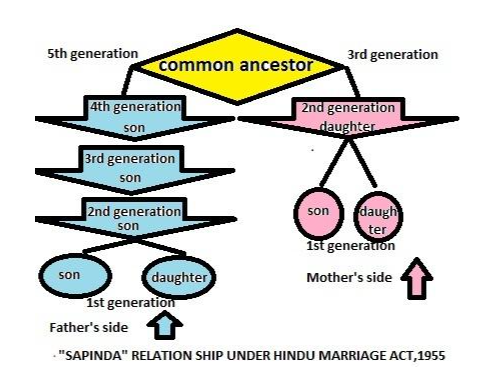
Legal Challenge and Court Ruling
- Petitioner's Arguments
- In 2007, the petitioner's marriage was annulled based on her husband's successful assertion of a sapinda marriage, challenging the constitutional validity of the prohibition on such unions.
- The petitioner contended that Section 5(v) violated the right to equality under Article 14, as sapinda marriages exist even without established customs.
- The petitioner emphasized that family consent should validate the marriage.
- Delhi Court’s Decision
- The Delhi High Court dismissed the petitioner's arguments, citing a lack of stringent proof for an established custom justifying sapinda marriages.
- The court asserted that regulating the choice of a partner in marriage is within legal bounds.
- It found no "cogent legal ground" supporting the claim that the prohibition infringed on the right to equality.
Understanding Sapinda Marriage
- *Definition and Criteria
- Sapinda marriages involve individuals related within a specific degree of closeness, defined under Section 3 of the Hindu Marriage Act (HMA). Individuals are considered sapindas if they share a lineal ascendant or have a common lineal ascendant within the limits of sapinda relationship.
- Lineal Ascendant Regulations
- The HMA prohibits marriage within three generations on the mother's side and five generations on the father's side. This restricts unions with siblings, parents, and grandparents on the mother's side and extends further on the father's side.
- Section 5(v) of HMA 1955
- Violation of Section 5(v) for sapinda marriages without an established custom result in the marriage being declared void. The marriage is considered invalid from the outset.
- Exceptions to Prohibitions
- The exception under Section 5(v) permits sapinda marriages if there is a well-established custom within the community, tribe, group, or family. The custom must be continuously and uniformly observed for a long time and adhere to specified conditions.
International Perspectives on Incestuous Marriages
- France and Belgium
- France and Belgium abolished the crime of incest, allowing marriages between consenting adults under the Penal Code of 1810.
- Portugal
- Portuguese law does not criminalize incest, implying that marriages between close relatives may not be prohibited.
- Republic of Ireland
- While same-sex marriages are recognized, laws on incestuous relationships have not been explicitly updated.
- Italy
- In Italy, incest is a crime only if it causes a "public scandal," indicating consideration of certain circumstances.
- United States
- In the U.S., incestuous marriages are generally prohibited, with variations in laws among states. Some states permit such relationships under specific conditions.
Conclusion
- Sapinda Marriages and HMA
- The HMA's regulation of sapinda marriages aims to maintain familial and social harmony by restricting unions within defined lineal ascendants. Marriages violating these restrictions are declared void unless an established custom permits them.
- Global Legal Diversity
- Internationally, countries exhibit diverse legal approaches to incestuous relationships. Legal stances vary, showcasing the different perspectives on personal choice and family relationships.
|
UPSC Previous Year Questions Prelims (2020) Q. In the context of Indian history, the Rakhmabai case of 1884 revolved around
Select the correct answer using the code given below: (a) 1 and 2 only Ans: (b) Exp:
|
Source: IE
Mosquitofish
In News: In recent times, local water bodies in Andhra Pradesh, Odisha, and Punjab have seen the introduction of mosquitofish as a strategy to tackle the growing mosquito issue.
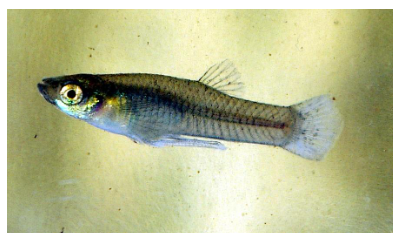
Background - Surge in Mosquito-borne Diseases
- Climate and Habitat Changes
- Global shifts in climate and habitats have led to a rise in mosquito-borne diseases, affecting over 500 million people in 150+ countries.
- India's Public Health Challenge
- In India, around 40 million individuals annually face the impact of these diseases, posing a persistent public health challenge for decades.
The Mosquitofish Approach
- Mosquitofish Characteristics
- Originating from the southeastern United States, Mosquitofish are known for their larvae-eating appetite, consuming up to 250 larvae per day.
- Introduction in India
- Initially introduced in India in 1928 during British rule to combat mosquito spread, Mosquitofish, specifically Gambusia species, were intended to control larvae but turned invasive.
Negative Impacts of Mosquitofish
- Invasive Nature
- Adaptable and highly tolerant to environmental changes, Mosquitofish became highly invasive and are now considered among the hundred most detrimental invasive alien species.
- Disruption of Native Ecosystem
- Aggressive feeding habits lead to the consumption of not only mosquito larvae but also native fish eggs, posing a threat to local species and biodiversity.
- Loss of Unique Species
- The introduction of Mosquitofish jeopardizes the existence of endemic fish species, potentially resulting in a loss of biodiversity and ecosystem resilience.
- Significant Steps
- The World Health Organization ceased recommending Gambusia for mosquito control in 1982. In 2018, the National Biodiversity Authority of India designated G. affinis and G. holbrooki as invasive alien species.
Major Challenges in Mosquito and Disease Control
- Challenges in Mosquito Control
- Complex Environment
- Diverse conditions across India lead to varied mosquito breeding patterns.
- Insecticide Resistance
- Mosquitoes develop resistance to insecticides, necessitating the development of new alternatives.
- Poor Sanitation
- Open drains and stagnant water sources provide abundant breeding grounds.
- Complex Environment
- Challenges in Disease Control
- Underreporting
- Many cases in rural areas go unreported, hindering accurate data and targeted interventions.
- Limited Access to Healthcare
- Remote areas face delays in treatment due to limited access to healthcare.
- Underreporting
Way Forward
- Improved Sanitation and Infrastructure
- Efficient waste collection and disposal to eliminate breeding grounds.
- Proper drainage systems to prevent stagnant water accumulation.
- Providing clean water storage solutions to reduce dependence on open containers.
- Integrated Vector Management (IVM)
- Implementing a comprehensive approach combining biological control, insecticide use, and environmental management to address mosquito-related challenges.
- Community Engagement and Education
- Foster public awareness through educational campaigns.
- Emphasize preventive measures and encourage community participation in mosquito control.
|
UPSC Previous Year Questions Prelims (2017) Q. Consider the following statements:
Which of the statements given above is/are correct? (a) 1 only Ans: (c) Prelims (2023) Q. ‘Wolbachia method’ is sometimes talked about with reference to which one of the following? (2023) (a) Controlling the viral diseases spread by mosquitoes Ans: (a) Mains (2013) Q. Identify the Millennium Development Goals (MDGs) that are related to health. Discuss the success of the actions taken by the Government for achieving the same. Mains (2020) Q. What do you understand by nanotechnology and how is it helping in health sector? |
Source: TH
6th Edition of Khelo India Youth Games
In News: The ongoing 6th edition of the Khelo India Youth Games (KIYG) is taking place from January 19th to January 31st, 2024, spanning four cities in Tamil Nadu – Chennai, Trichy, Madurai, and Coimbatore.
Khelo India Youth Games (KIYG) Overview
- Nature of the Event
- National-level, multi-disciplinary sports competition.
- Targets school and college students across India.
- Frequency and Initiative
- Held annually in January or February.
- Integral part of the government's Khelo India initiative.
- Objectives
- Promote a sports culture.
- Identify and nurture sporting talent at the grassroots level.
- Past Editions
- Previous venues include Delhi, Pune, Guwahati, Panchkula, and Bhopal.
- 6th edition hosted in Tamil Nadu.
- Format and Categories
- Divided into under-17-year-old school students and under-21 college students.
- Operates in a team championship format.
- Medal Tally System
- Individual athletes or teams contribute medals to the overall tally of their respective state or Union Territory (UT).
- The state or UT with the highest count of gold medals is declared the winner.
- Historical Dominance
- Maharashtra and Haryana are the only teams to have clinched the KIYG title.
- 6th Edition Highlights
- 933 medals at stake (278 gold, 278 silver, and 377 bronze) across 26 sports.
- Introduction of Squash as a new sport.
- Silambam, an indigenous martial art, featured as a demonstration sport.
- Mascot
- Named Veera Mangai.
- Inspired by Rani Velu Nachiyar, an Indian queen known for her resistance against British colonial rule.
- Logo Significance
- Incorporates the figure of poet Thiruvalluvar, adding cultural and literary elements to the event.
|
UPSC Previous Year Questions Prelims (2021) Q. Consider the following statements in respect of the Laureus World Sports Award which was instituted in the year 2000:
Which of the above statements are correct? (a) 1 and 2 only Ans: C
Prelims (2021) Q. Consider the following statements in respect of the 32nd Summer Olympics:
Which of the above statements is/are correct? (a) 1 only Ans: (b)
Mains (2014) Q. An athlete participates in Olympics for personal triumph and nation’s glory; victors are showered with cash incentives by various agencies, on their return. Discuss the merit of state sponsored talent hunt and its cultivation as against the rationale of a reward mechanism as encouragement. |
Source: PIB
Philippines and Vietnam Cooperation in South China Sea
In News: In the face of opposition from China, the Philippines and Vietnam have recently taken substantial steps to enhance their collaboration in the South China Sea, asserting their interests in the region.
Key Agreements Between Countries
- Comprehensive Relationship
- Agreements between the two nations encompass various aspects, fostering a comprehensive relationship.
- Maritime Security Focus
- Emphasis on enhancing maritime security cooperation.
- Trade and Investment
- Agreements extend to facilitate and strengthen trade and investment ties between the countries.
South China Sea Overview
- Geographical Context
- The South China Sea is a marginal sea located in the Western Pacific Ocean.
- Bordering Nations
- Surrounded by Brunei Darussalam, Malaysia, Indonesia, the Philippines, Singapore, Thailand, Vietnam, and China.
- Connecting Waterways
- Linked to the East China Sea through the Taiwan Strait.
- Connected to the Philippine Sea through the Luzon Strait.
- Contested Maritime Area
- Subject to territorial disputes involving six countries: China, Brunei, Taiwan, Vietnam, Malaysia, and the Philippines.
- Territorial Disputes
- Ongoing disagreements revolve around territorial claims and sovereignty rights in the South China Sea.
Source: TH
Eravikulam National Park
In News: Eravikulam National Park (ENP), the native environment of the Nilgiri tahr, is set to temporarily close during the calving season of the species.

Eravikulam National Park Overview
- Location
- Situated along the Western Ghats in the Idukki district of Kerala.
- Establishment
- Declared as a National Park in the year 1978.
- Geographical Coverage
- Spans an expansive area of 97 sq. km.
- Highest Peak
- Home to Anamudi, the highest peak south of the Himalayas, reaching 2695 meters.
- Positioned on the southern side of the park.
- Unique Natural Phenomenon
- Renowned for the rare blooming of the "Neelakurinji" flower, occurring once every twelve years.
- Climate
- Experiences heavy rainfall during the southwest (June/July) and retreating (October/November) monsoons.
- Recognized as one of the wettest areas globally.
- Vegetation
- Dominated by rolling grasslands.
- Upper regions feature patches of shola forests.
- Flora
- Noteworthy plant species include Actinodaphne bourdilloni, Microtropis ramiflora, Pittosporum tetraspermium, Sysygium aronottianum, and Chrysopogon Zelanieus.
- Shola grasslands boast a rich array of balsams and orchids, including the supposedly extinct Brachycorythis wightii.
- Fauna
- Diverse wildlife includes Nilgiri Tahr, Gaur, Sloth Bear, Nilgiri Langur, Tiger, Leopard, Giant Squirrel, and wild dogs.
- Hosts half of the world population of the endangered Nilgiri Tahr.
- Home to the Atlas moth, the largest of its kind globally.
- Avian and Insect Life
- Supports 140 bird species, with 10 exclusive to the Western Ghats.
- Records over 100 butterfly varieties.
Source: TH
Snow Leopard - Edukemy Current Affairs
In News: Recently, the government announced that the first scientific survey of the snow leopard in India reveals the presence of 718 of these elusive cats in the country.
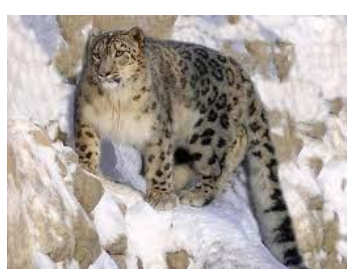
About Snow Leopard
- A large, long-haired Asian cat, classified as Panthera uncia or Uncia uncia in the family Felidae.
- Geographic Range
- Inhabit a vast area in northern and central Asia's high mountains, including the Himalayan region.
- Found in 12 countries, such as China, Bhutan, Nepal, India, Pakistan, Russia, and Mongolia.
- In India, observed in Jammu and Kashmir, Himachal Pradesh, Uttarakhand, Sikkim, and Arunachal Pradesh.
- Features
- Average adult length from nose to tail is 1000 to 1300 mm.
- Thick grey and yellow-tinged fur with solid spots on the head, neck, and lower limbs, and rosettes over the rest of the body.
- Long, thick tails used for balancing on rocks and protection from the cold.
- Short forelimbs and long hind limbs for agility, capable of jumping up to 50 feet in length.
- Solitary creatures with prolonged social contact occurring during cub-raising by females.
- Conservation Status
- IUCN Red List: Vulnerable
- CITES: Appendix I
- Wildlife (Protection) Act 1972: Schedule I
Source: LM
Bharat 5G Portal
In News: Recently, on the sidelines of 'Bharat Telecom 2024,' the Secretary of the Department of Telecommunications (DoT), Ministry of Communications (MoC), inaugurated the "Bharat 5G Portal – an integrated portal."
About Bharat 5G Portal
- Overview
- Bharat 5G Portal is a comprehensive platform designed to cater to the interests of startups, industry, and academia, focusing on quantum, 6G, IPR, and 5G domains.
- Collaborative Initiative
- The portal collaborates with PANIIT USA to host the Future Tech-Experts registration portal.
- This collaboration aims to provide assistance and guidance to the Indian Telecom ecosystem, aligning with the vision of Atmanirbhar Bharat.
- Unified Solution
- Functioning as a one-stop solution, Bharat 5G Portal addresses various aspects, including quantum, IPR, PoCs/Pilot, 5G, and 6G.
- It consolidates academic R&D developments, industry standards, information on OEMs, startups/MSMEs, and subject matter experts.
- Objectives
- The primary goal of the portal is to propel India's capabilities in the 5G domain.
- It seeks to foster innovation, collaboration, and knowledge-sharing within the telecom sector.
Other 5G Initiatives in India
- PM's Recognition
- During the India Mobile Congress, the Prime Minister of India acknowledged and awarded 100 "5G Use Case Labs" to educational institutions across the country.
- The initiative is geared towards building competencies and engagement in 5G technologies for students and the startup community.
- Network of Labs
- All awarded labs and institutions, totalling over 100, are interconnected through a dedicated portal, creating a digital network of 100 5G Labs.
- Knowledge Dissemination
- The portal serves as a knowledge dissemination platform for institutions, students, and startups.
- It facilitates the testing and development of 5G use cases within the connected labs.
- Implementation Agency
- Telecommunications Consultants India Limited (TCIL) is the designated implementation agency responsible for the installation of 100 Labs and the development of the associated portal.
Source: PIB
Populism: Detrimental to Public Health
In News: In the varied landscape of India, where bustling cities coexist with serene villages, a subtle struggle for public health is underway. However, this endeavour often takes a backseat in public attention compared to the allure of disease cure.
The Dichotomy in Democratic Public Health Processes in India
- Focus on New Hospitals and Subsidized Treatments
- The emphasis on constructing new hospitals and providing subsidized treatments is a characteristic of democratic governance.
- While addressing immediate healthcare needs, the effectiveness in promoting sustained population health is questioned.
- Emergency response strategies are favoured, often lacking action beyond public announcements.
- Placement of Emergency Response Over Prevention
- Visible achievements are constrained by budgetary limitations, impacting effective implementation.
- Neglect of critical areas like sanitation, disease surveillance, and public health education.
- Unsung victories in disease eradication are overshadowed by tangible achievements.
- A Case Study of Dengue Highlighting Dichotomy
- Short-term focused response during outbreaks.
- Neglect of root causes and prevention strategies.
- Need for research and development in areas like vaccine development and understanding vector bionomics.
- Challenges and Disparities in Public Health
- Profit-driven nature of the pharmaceutical industry affecting public health.
- Socio-economic factors contributing to health disparities.
- Policy targets vs. health realities and gaps in public health efforts.
- Absence of Specialized Courses
- Lack of specialized courses in India’s education system for a multidisciplinary approach.
- Public health should involve expertise from various fields.
- Way Forward
- More focus on preventive management in public health.
- Need for autonomy in healthcare, separating policymaking from political influence.
- Assessing India's university ranking goals and proposed interventions for improvement.
- Strategic Partnerships with Defence Initiatives
- Collaborating with defence initiatives to enhance project management efficiency.
- Strategic partnerships with universities can contribute to national security.
- Conclusion
- Urgent need to reimagine public health governance with evidence-based, holistic, and long-term strategies addressing immediate and future health needs.
Source: TH
Share the article
Edukemy’s Current Affairs Quiz is published with multiple choice questions for UPSC exams
MCQ
Get Latest Updates on Offers, Event dates, and free Mentorship sessions.

Get in touch with our Expert Academic Counsellors 👋
FAQs
UPSC Daily Current Affairs focuses on learning current events on a daily basis. An aspirant needs to study regular and updated information about current events, news, and relevant topics that are important for UPSC aspirants. It covers national and international affairs, government policies, socio-economic issues, science and technology advancements, and more.
UPSC Daily Current Affairs provides aspirants with a concise and comprehensive overview of the latest happenings and developments across various fields. It helps aspirants stay updated with current affairs and provides them with valuable insights and analysis, which are essential for answering questions in the UPSC examinations. It enhances their knowledge, analytical skills, and ability to connect current affairs with the UPSC syllabus.
UPSC Daily Current Affairs covers a wide range of topics, including politics, economics, science and technology, environment, social issues, governance, international relations, and more. It offers news summaries, in-depth analyses, editorials, opinion pieces, and relevant study materials. It also provides practice questions and quizzes to help aspirants test their understanding of current affairs.
Edukemy's UPSC Daily Current Affairs can be accessed through:
- UPSC Daily Current Affairs can be accessed through Current Affairs tab at the top of the Main Page of Edukemy.
- Edukemy Mobile app: The Daily Current Affairs can also be access through Edukemy Mobile App.
- Social media: Follow Edukemy’s official social media accounts or pages that provide UPSC Daily Current Affairs updates, including Facebook, Twitter, or Telegram channels.



